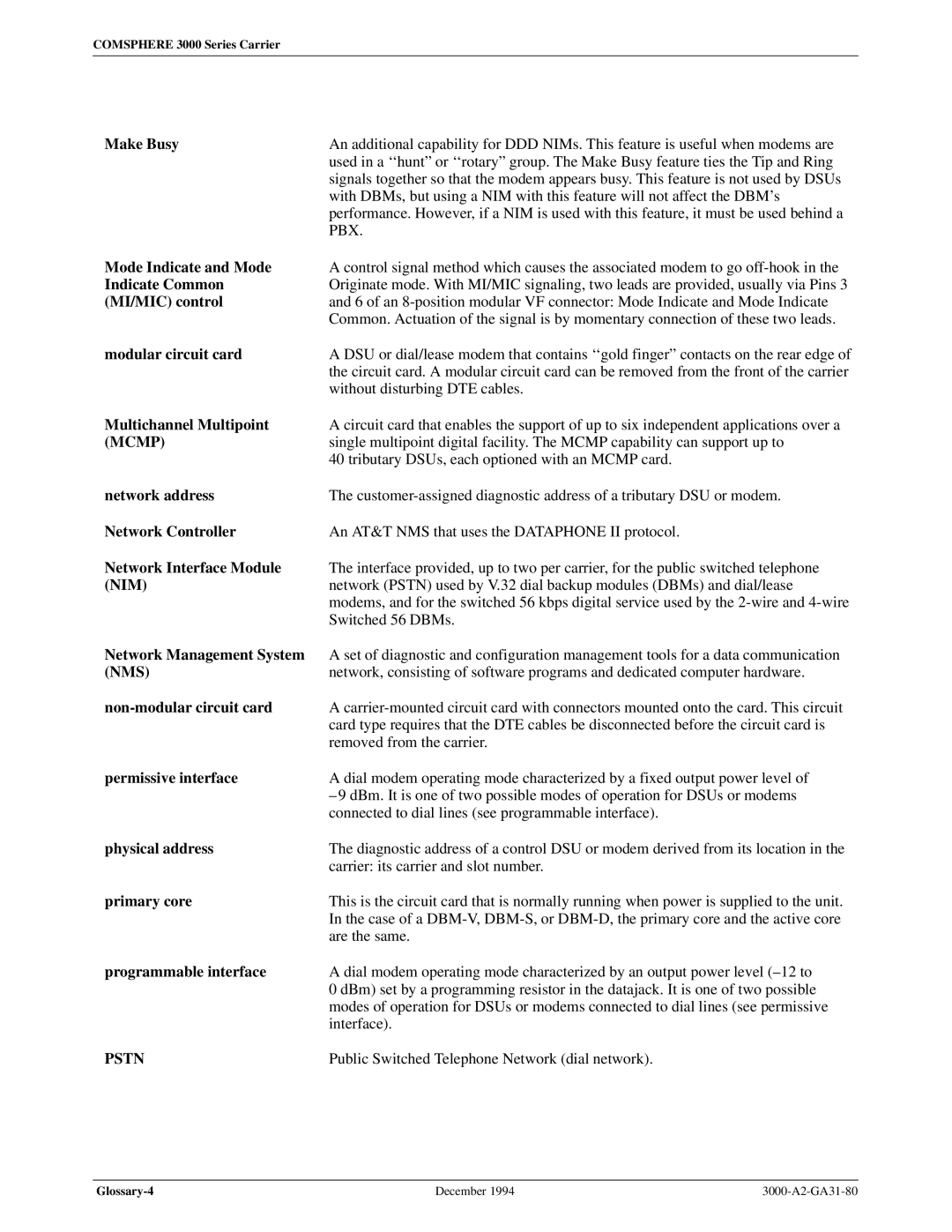
COMSPHERE 3000 Series Carrier
Make Busy | An additional capability for DDD NIMs. This feature is useful when modems are |
| used in a ``huntº or ``rotaryº group. The Make Busy feature ties the Tip and Ring |
| signals together so that the modem appears busy. This feature is not used by DSUs |
| with DBMs, but using a NIM with this feature will not affect the DBM's |
| performance. However, if a NIM is used with this feature, it must be used behind a |
| PBX. |
Mode Indicate and Mode | A control signal method which causes the associated modem to go |
Indicate Common | Originate mode. With MI/MIC signaling, two leads are provided, usually via Pins 3 |
(MI/MIC) control | and 6 of an |
| Common. Actuation of the signal is by momentary connection of these two leads. |
modular circuit card | A DSU or dial/lease modem that contains ``gold fingerº contacts on the rear edge of |
| the circuit card. A modular circuit card can be removed from the front of the carrier |
| without disturbing DTE cables. |
Multichannel Multipoint | A circuit card that enables the support of up to six independent applications over a |
(MCMP) | single multipoint digital facility. The MCMP capability can support up to |
| 40 tributary DSUs, each optioned with an MCMP card. |
network address | The |
Network Controller | An AT&T NMS that uses the DATAPHONE II protocol. |
Network Interface Module | The interface provided, up to two per carrier, for the public switched telephone |
(NIM) | network (PSTN) used by V.32 dial backup modules (DBMs) and dial/lease |
| modems, and for the switched 56 kbps digital service used by the |
| Switched 56 DBMs. |
Network Management System | A set of diagnostic and configuration management tools for a data communication |
(NMS) | network, consisting of software programs and dedicated computer hardware. |
| A |
| card type requires that the DTE cables be disconnected before the circuit card is |
| removed from the carrier. |
permissive interface | A dial modem operating mode characterized by a fixed output power level of |
| ± 9 dBm. It is one of two possible modes of operation for DSUs or modems |
| connected to dial lines (see programmable interface). |
physical address | The diagnostic address of a control DSU or modem derived from its location in the |
| carrier: its carrier and slot number. |
primary core | This is the circuit card that is normally running when power is supplied to the unit. |
| In the case of a |
| are the same. |
programmable interface | A dial modem operating mode characterized by an output power level (±12 to |
| 0 dBm) set by a programming resistor in the datajack. It is one of two possible |
| modes of operation for DSUs or modems connected to dial lines (see permissive |
| interface). |
PSTN | Public Switched Telephone Network (dial network). |
December 1994 |
|
